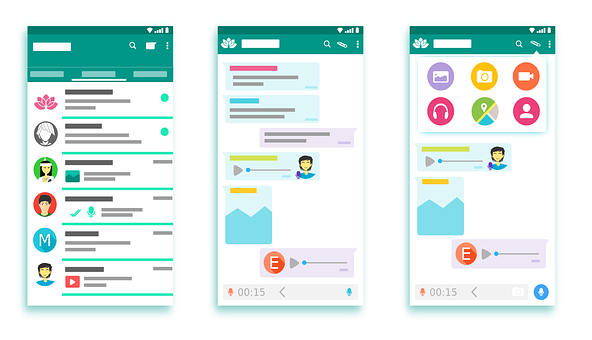5 UX Rules to Improving Your Mobile App User Experience
While their dozens of apps to solve one kind of problem, each of them needs to have a unique approach towards it. A unique approach not only makes the app stand out, but it can also grow the revenue many folds.
>>Are You Looking for Mobile App Development Company?: Connect Our Team
Almost any app has several development phases. Starting from need analysis all the way up to testing and deploying. But of the most crucial and advanced steps of these is Design.
An early wireframe to full-fledged mockups, it controls how the user is going to use the app. What all action will stand out to the user? And how will the user use them? It’s like designing a lawn for the user to take a stroll in. If the user’s path gets blocked, or at any point, the user feels confused or if the path seems too long, user will quit!
Keeping this in mind, our development team makes sure to get the required details in the design process as well. This not only makes the work go easy but also help extract the aim with which the app get sketched. So that the developers can understand and keep the same idea in mind while developing applications.
There are many established design laws that we follow to build a more instinctive and appealing user experience. Some of the most major laws are:
1 Hick’s law
According to this law, improve the number of options for action will increase the time taken for user to decide logarithmically. Simply put, this means tha more choices, the more the time it will take for the user to select one. Hence, we try to cut the number of options that the user can take when present on a screen.
2 Zeigarnik effect
Russian psychologist Bluma Zeigarnik first studied the phenomenon of why a waiter had a good recollection of unpaid orders than that of paid orders. Turns out the users tend to remember uncompleted tasks better than completed tasks.
This applies to an app’s UX too! For example, by reminding user with a progress bar, we can drive the user to complete his/her profile!
3 The Isolation Effect
Also known as the Von Restorff Effect, predicts that when many similar objects are present, the one that varies from the rest is most likely to be remembered.
This can be useful in cases such as spotlighting a subscription offer over another, or in other places where the user might have multiple options.
4 Serial Position Effect
Users best remember the first and last thing on the list. That is, other middle elements are less likely to stay in the memory of users. Because of this, we place key activity either on the extreme left or right within elements such as action button/bar.
5 Miller’s law
As stated by this law, an average person can only keep 5 to 7 actions in their working memory. If there are any more, options are user will not focus on it.
Hence we make sure that any point of time in an app, the number of actions that can be taken, never goes beyond 3. This helps the user to remain more focussed and spend more time using apps than deciding.
>>Are You Looking for Mobile App Development Company?: Connect Our Team
There are many minute monitoring and ways, that enhance the user’s experience in the app. These phenomenons, not only help the users but also improve an app’s user engagement. Which in turn will result in both happy users and happy businesses!
We keep all this in mind while designing and developing apps to ensure that we get the best of both worlds. Contact us now if you have an amazing idea, that you would like to get implemented brilliantly.












Leave a comment